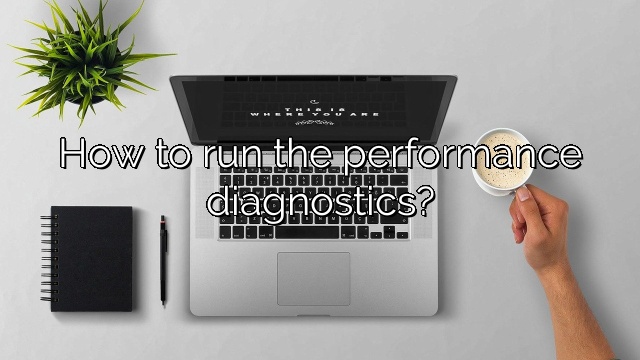
How to run the performance diagnostics?
On Windows 10, go to Settings > Update & Security > Troubleshoot .
On Windows 11, go to Start > Settings > System >
Choose a troubleshooter for your problem. Options include Bluetooth, Keyboard, Windows Update, and Internet Connections.
How do I troubleshoot performance issues in Windows 10?
While Windows 10 includes a number of tools for troubleshooting performance issues, such as the Performance tab in Task Manager, you’ll find Performance Monitor to be the most comprehensive utility that allows you to view, analyze, and apply material data to help you. system performance problems.
How to fix Windows 10 diagnostics not working on Windows 10?
You need to repair your .NET Framework installation to normally resolve the issue and successfully run diagnostics on Windows 10. Start by pressing the Windows and S keys on your keyboard at the same time. Then select programs, dial type and functions. Find and select the Microsoft .NET Framework package.
How to run the performance diagnostics?
To be able to run diagnostics, you must accept the legal and data protection regulations. When running performance diagnostics to install them, a notification is displayed. After the installation is complete, you will see a notification that the installation is worth it. The selected scan is then performed for the specified time.
How do I diagnose performance issues in Windows 10?
Windows 10 has a built-in performance troubleshooter that can help you find and fix issues that might be slowing down your PC. To open the troubleshooter, right-click the Start button and select Control Panel. At the top, under Security and Maintenance, click Fix simple computer problems.
How do I fix Windows 10 performance issues?
Make sure you have the latest Windows updates and drivers installed.
Restart your computer and open only the applications you need.
Use ReadyBoost to improve performance.
Make sure the system manages the file size of the website page.
Find a small space on the CD and a free space above it.
How do I run a full diagnostic on Windows 10?
View diagnostics for your data
On Windows 10: Open Start and select Settings > Privacy > Diagnostics & Feedback. Make sure all Diagnostic Data Viewer options are enabled, then select Diagnostic Data Viewer.
How do you troubleshoot a Windows performance issue?
#1 Check for updates. Open the Start menu and select Settings.
2 Disk Cleanup. Windows requires at least 2 GB of free disk space.
3 Delete the application. You probably need to uninstall the app because you need storage space or you barely need it.
4 Restart your computer.

Charles Howell is a freelance writer and editor. He has been writing about consumer electronics, how-to guides, and the latest news in the tech world for over 10 years. His work has been featured on a variety of websites, including techcrunch.com, where he is a contributor. When he’s not writing or spending time with his family, he enjoys playing tennis and exploring new restaurants in the area.










